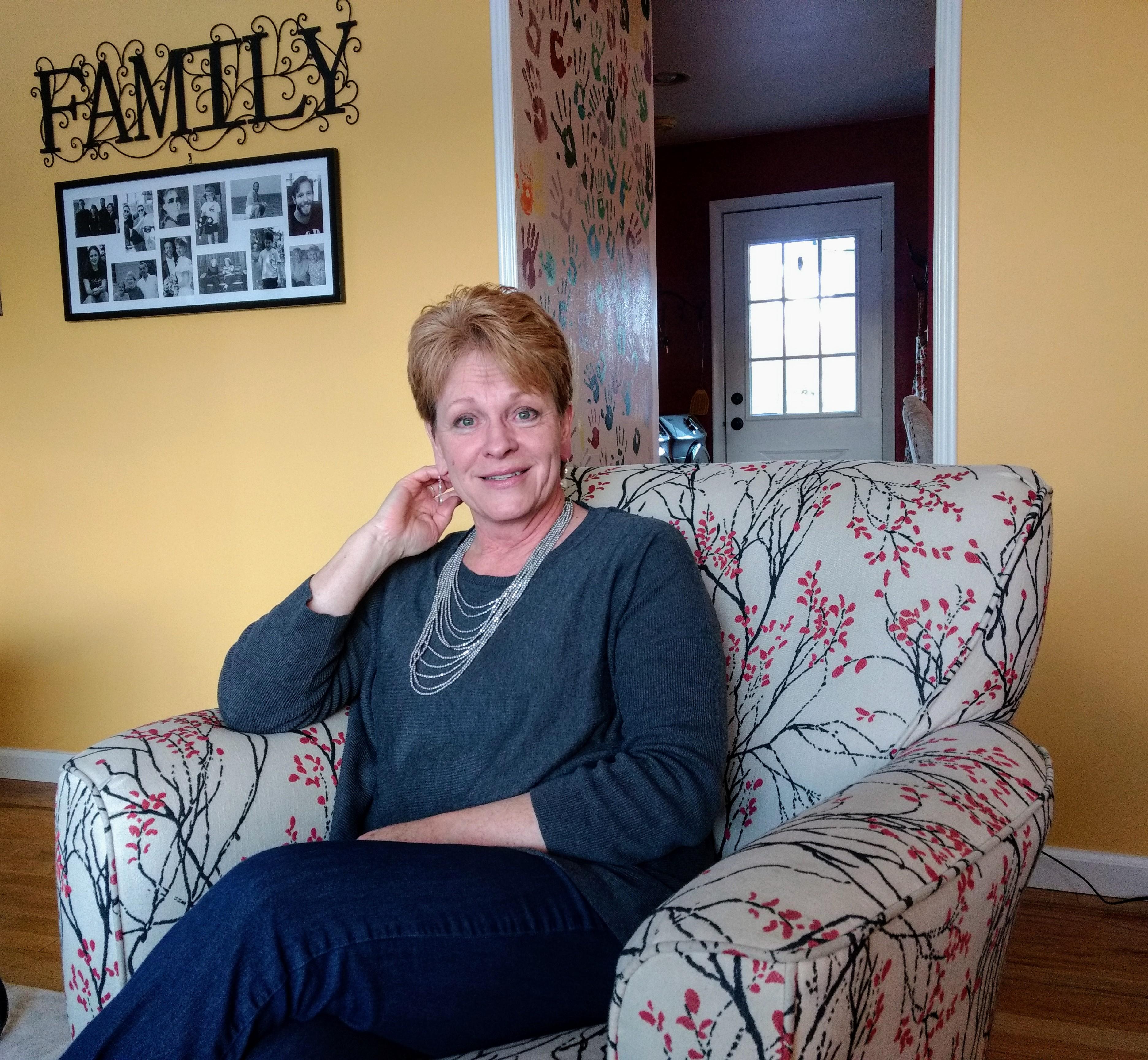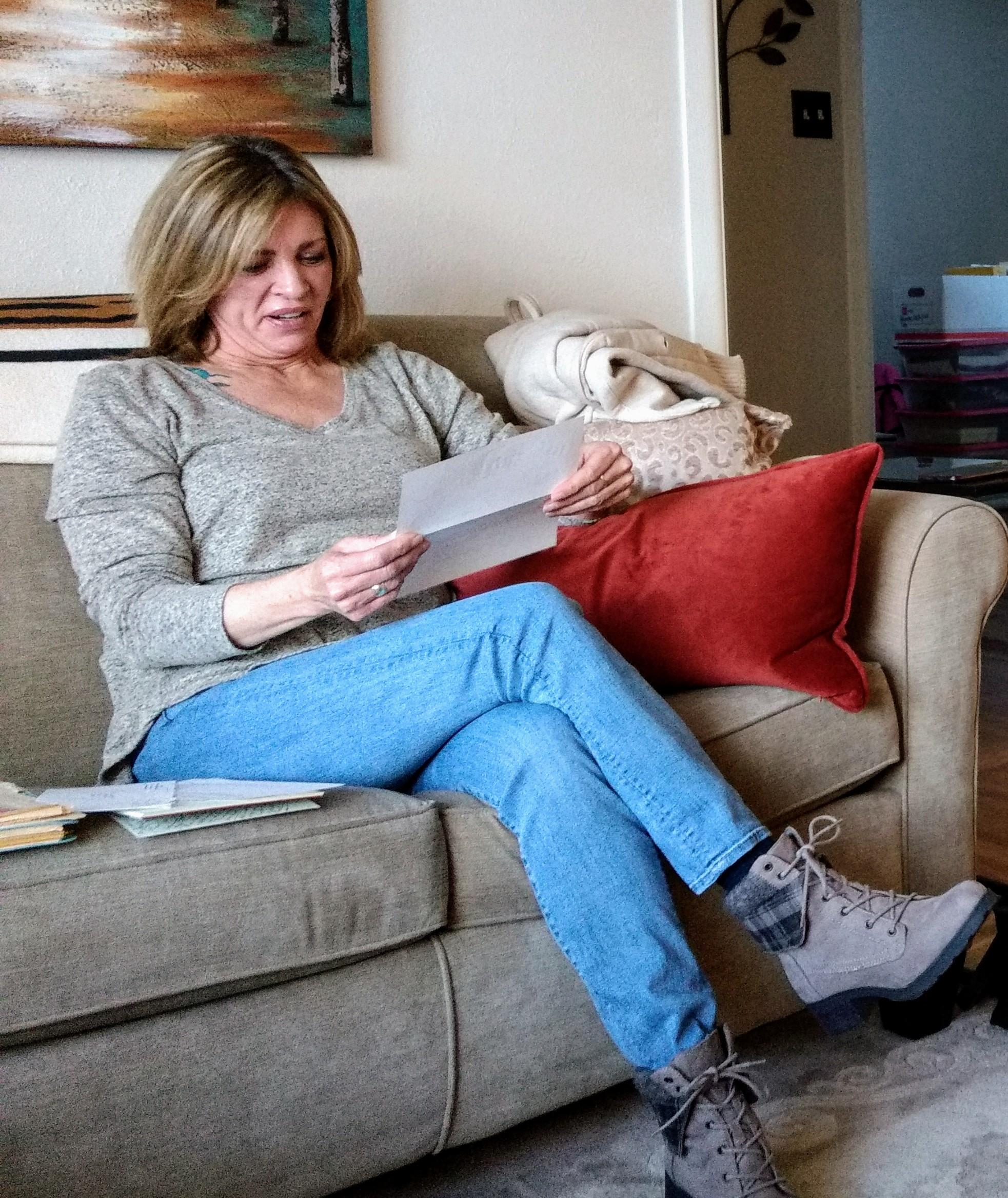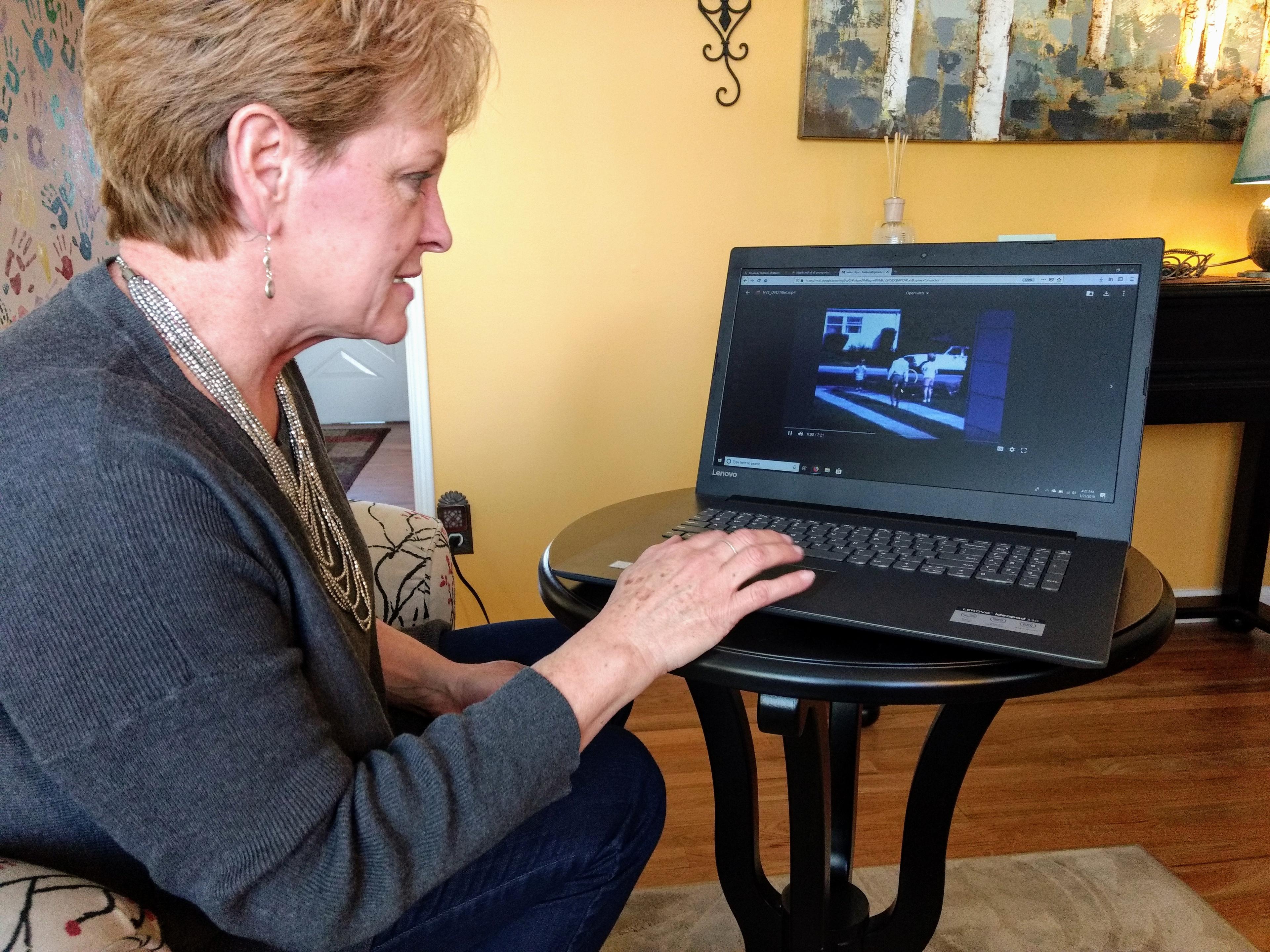Neighbors shared what they knew about a developer's plans and issued a call to action filled with exclamation points, eloquent capitalization and trepidation.
It could have been yet another salvo in any number of current neighborhood debates in our fast-changing city. For instance, the furor that greeted plans to put restaurants, shops, offices and hundreds of homes -- 150 of them designated affordable -- where the Colorado Department of Transportation once had its headquarters in Virginia Village. The City Council approved the proposal for the CDOT plot after a tense meeting at which one area resident said the project would mean more crime. He added, referring to the expected newcomers: "We're gonna have to live with them and we're all gonna resent them forever."
A nearly lifelong Virginia Village resident who attended that meeting was no fan of the development plan. But she was troubled by the rancor. Florence Sebern found herself thinking about change in Virginia Village when she was young and messages were tapped out on a typewriter, copied and delivered door-to-door instead of posted on Nextdoor. Back in 1966, a spat over growth and density led to a new neighbor who was an internationally renowned literary figure; a childhood friendship; and a bond for Sebern's mother that, while brief, left a legacy.
"How do you look for the good?" Sebern wanted to tell her present-day neighbors. "Because there will be good."
"We're always better when we're looking for the good."

A 1966 flyer gets off to a bold-font start.
"Attention Virginia Village Owners!! This 'House' Affects YOU!!"A picture showed a house perched on a steeply sloping lot. The Urbishes were among three couples listed as contacts. Sebern's mother, Mary Rita Urbish, died in 2014 at the age of 87. Her father, Ben Urbish, died two years later at 84. The couple was married 55 years.
In 1992, Sebern and her own young family moved in next door to the house where she grew up, her presence later allowing her parents to die in the three-bedroom home they'd bought for $12,500 when they married. Sebern found the flyer among her mother's papers. Sebern's sister, Celeste Orr, said their mother "never threw anything away. Literally everything was important to her."
The two sisters sat in a living room Sebern had decorated in warm colors. Across the street was a modest house just like hers and her parents' that a developer had owned and rented out when they were little girls. In 1966, the developer had a second home hauled to the corner lot with plans to rent it as well. That second house, which judging by the flyer photo had had a rough journey, was the offending structure. It was described in the flyer as smaller than the local covenants allowed and sitting on an undersized lot.

The Urbishes helped organize a lawsuit challenging the property owner's right to erect what we might today call an accessory dwelling unit. Neighbors were asked to donate to help cover legal costs and show their support by attending a Feb. 11, 1966 hearing at the City and County Building.
"The question is do we, as present homeowners, CARE ENOUGH TO SEE THAT THESE RESTRICTIVE COVENANTS REMAIN IN FORCE?" the flyer asked, the word "remain" not just capitalized but underlined.
"Apathy on our part can result in the setting of a precedent, which could allow even more undesirable violations in future years."
The suit failed to get the little house removed. It and its neighbor are still there, though no longer owned by the developer. The smaller house, surrounded now by towering spruces, sits at an angle to other homes lined up like clapboard soldiers on either side of the street.
The legal action did force the developer to move the little house further from the street to comply with setback rules. According to neighborhood lore, Sebern said, the angry developer spread word that he would have his revenge by finding tenants who would "disturb the peace."
Here's where the literary figure comes in.
The late black South African writer Es'kia Mphahlele is best known for "Down Second Avenue," which is both lyrical memoirs and passionate indictment of apartheid in his homeland. He came to the University of Denver in 1966 to pursue a doctorate in creative writing. It was Mphahlele, his wife Rebecca -- who would earn a DU master's degree in social work and for a time was a caseworker for teenage mothers in Denver -- and their children who rented the bigger of the developer's two houses opposite the Urbishes.
Denver at the time was segregated by practice if not by law. Sebern only heard years later that the developer may have believed the Mphahleles' race would irritate residents of a neighborhood that then, as it is now, was predominantly white.
Sebern's mother had discovered on a visit for a relative's wedding that Colorado's climate eased her asthma. At 20, then Mary Rita Barclay left rural Illinois with her younger sister to move to Denver. They traveled by train and hit Jim Crow at St. Louis. Sebern grew up on stories of her mother deliberately drinking from a fountain labeled "colored" and of her conviction that racism was unjust. Once in Denver, the Barclay sisters lived with relatives and found jobs. Mary Rita Barclay met Ben Urbish at a petroleum company where she did office work and he was an accountant.
Years later in Denver, Mary Rita Urbish welcomed the Mphahleles. Little Florence was just happy that new playmates were moving nearby. Sebern said she was oblivious to the tension over the house or any racial subtext. As the eldest of three girls, Sebern said she also was thrilled that the new neighbor kids were boys.
"Even out of strife, even out of uncertainty, we can get back to a new normal," Sebern said.
Es'kia and Rebecca Mphahlele had five children, three of whom were teens or young adults when the family moved to Denver. Sebern remembers only the youngest two, Dichaba, known as Chabi, who was about seven years old when she met him, and his brother Puso, who was about five.
An Urbish family 8 mm home movie, now transferred to digital, show Chabi, Puso, Sebern and her middle sister Mary Carol -- Orr, just one year old at the time, is not in the shots. The four on camera were handling salamanders from nearby Cherry Creek with a childlike mixture of curiosity and mischief.
In another home movie, Chabi and Puso are among a gaggle of neighborhood kids at Sebern's sixth birthday party. In a community newspaper clipping among all the other documents that Mary Rita Urbish never threw away, Chabi, misspelled "Chubby," is just one in a list of guests -- Teresa, Mary Eileen, Rickie -- at the pow-wow themed party.
"The afternoon's activities ended with a "council fire" with her friends helping Florence blow out the birthday candles."
Sebern said: "We were friends. We were neighbors. We genuinely enjoyed each other."
Chabi Mphahlele, who grew up to be a musician, died in South Africa in 2015. Attempts to reach Puso Mphahlele were unsuccessful.

Es'kia Mphahlele doesn't figure much in the movies or Florence's memories.
It's unlikely the writer had time for neighborhood socializing. He had come to Denver intent on finishing his doctoral thesis in creative writing in two years, a goal he accomplished while also penning poetry, teaching, advising master's students and delivering public lectures.
The writer's thesis was the first draft of his novel "The Wanderers." The main character of that 1971 book, Timi Tabane, was, like Es'kia Mphahlele, an artist and teacher who longed for home over the decades politics forced him to travel the world. While written in Denver, the novel is set in the period and places before the Mphahleles arrived here.
Es'kia Mphahlele was banned from teaching because he opposed South Africa's Bantu Education Act of 1953, which relegated the country's black majority to separate and inferior education. He became an editor and writer for Johannesburg's famed "Drum" magazine. He covered such historic events as a mass women's march in 1956 against laws restricting the freedom of movement of black South Africans. In "Down Second Avenue," published in 1959, Es'kia Mphahlele said he wanted to write literature, not journalism, and feared for his children's future. In 1957, he wrote, "I was suddenly seized by a desire to leave South Africa for more sky to soar. I had been banned from teaching, and conditions were crushing me and I was shriveling in the acid of my bitterness; I was suffocating."
In exile, Es'kia Mphahlele did soar as a writer, teacher and cultural center administrator. But he also found exile took an emotional toll. He never seemed able to put down roots. Before heading to DU he had lived most recently in Kenya and earlier in France, Ghana, Senegal, Sierra Leone and Uganda and been a visiting professor at MIT. DU, courting him for the luster he could add to its literature program, granted him a fellowship and waived tuition.
"In Denver I had been as happy as one can be living in exile,"Es'kia Mphahlele later told his biographer N. Chabani Manganyi.
"I was in my element: attending courses in creative writing and working once more on a full-scale narrative that partially fulfilled my longstanding desire for imaginative writing. A creative slump had settled in during the years in Kenya, and in Denver I could make up for lost time."
Denver itself was no muse. Es'kia Mphahlele found the Rockies "dreary."
"I used to look at them and the snow in winter and wonder why so many Americans could feel ecstatic about them," he told Manganyi.
Es'kia Mphahlele had a reputation for being opinionated -- particularly about what should and shouldn't be considered literature -- and sometimes prickly and prone to provocative statements. Writer Gunnar Boklund, in a conversation Manganyi transcribes in his 1983 biography "Exiles and Homecomings," describes himself and other colleagues at DU at the time taking the opportunity of the thesis defense to give Es'kia Mphahlele some of his own medicine. Though they never doubted they would grant his doctorate, they questioned him sharply. Left out of their joke was the outside department representative, distinguished diplomat Josef Korbel. Korbel, father of Madeleine Albright, was the founder and first dean of DU's Graduate School of International Studies, which was renamed the Josef Korbel School of International Studies in 2008. Korbel died in 1977.
"We always asked the victim to depart while we discussed," Boklund recalled. "Then Korbel whispered: 'I must say I am shocked at the way you treated him. Don't you know that this man is a dangerous revolutionary?' "
Es'kia Mphahlele, who said he generally tried to keep his political opinions to himself at a time when Vietnam and civil rights were commanding U.S. headlines, expressed surprise that Korbel would have made such an assessment.
The writer's wife, meanwhile, strode into one of the most contentious issues of a contentious period.
In 1967 Colorado adopted the first law in the country liberalizing abortion regulations, six years before the United States Supreme Court found in Roe v. Wade that women have a constitutional right to have an abortion. Sebern said her mother was following the issue before the law changed and wanted to know more, but none of her neighbors were as interested. None except Rebecca Mphahlele, who suggested she and Mary Rita Urbish go the Capitol to listen to the legislators debate.
The front page of The Denver Post on March 10, 1967 described more than 150 people -- "at least half of them women" -- packed into a room on the third floor of the Capitol for a hearing of the House Committee on Health, Welfare and Institutions for a hearing that lasted three and a half hours.
Mary Rita Urbish, whose formal education had ended at high school, went on to be a leader in the pro-life movement. She helped found the group Colorado Right to Life a few months after that trip to the State House with Rebecca Mphahlele, who died in 2004. In 1988 Mary Rita Urbish was the lead plaintiff in a case that went to the Supreme Court of Colorado challenging rules that allowed public funds to be used to pay for abortions. The court ruled that it was constitutional to allow taxpayer money to be used to pay for abortions when medical conditions seriously threatened the life of a pregnant woman if her pregnancy came to term, but that it was unconstitutional to pay with public money when the issue was a potentially fatal medical condition of the unborn child. Mary Rita Urbish also was active in the state GOP and once spoke at the annual March for Life in Washington. Sebern, an office manager, also has been active in the right-to-life movement and politics.
Sebern said Rebecca Mphahlele gave her mother courage. When her mother told the story of the legislative hearing, Sebern said, "her emphasis was on Rebecca's willingness to go with her and willingness to help her understand a process that she didn't understand."
Once Es'kia Mphahlele had his PhD, he left with his family for a teaching post in Zambia. The Urbish home movies include a clip of Virginia Village neighbors seeing the Mphahleles off at the airport. The lighting is poor, cinematographically speaking, but the hugs and smiles are warm. The Mphahleles are weighed down with more hand luggage than we'd ever get away with today.
The next year, Es'kia Mphahlele was nominated for a Nobel literature prize.
After a short stint in Zambia, Es'kia Mphahlele returned to DU as an associate professor, this time buying a home in Belcaro. He told his biographer he encountered racism when he tried to buy and had to turn to a civil rights group for help. He moved to the University of Pennsylvania as a full professor in 1974.
Mphahlele, who once told a researcher that "an African cares very much where he dies and is buried," returned to South Africa with his family in 1977. Tensions with the apartheid government did not disappear, but he eventually took a post at Johannesburg's University of the Witwatersrand. He was the first black professor there and taught in an African literature department he created. He wrote two more novels and a second volume of memoirs, and lived to see apartheid end in 1994. He died in 2008; this December will be the centenary of his birth.
Sebern did not see the Mphahlele children during their second stay in Denver. She does not believe her mother ever reconnected with Rebecca Mphahlele. But her mother followed the Mphahleles' story. Mary Rita Urbish once told her daughter: "You know that they eventually went back and did great work."
Sebern said that 10 or 15 years ago she became curious about Es'kia Mphahlele and did some research on him on the internet. She has her mother's copy of "Down Second Avenue." It is dated 1971. Mary Rita Urbish must have found herself with questions about the author after he and his family left Virginia Village.
A quote from Eleanor Roosevelt was printed on a bookmark her mother had tucked inside her copy of Es'kia Mphahlele's best known work: "When you have decided what you believe, what you feel must be done, have the courage to stand alone and be counted."













